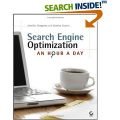Amazon SEO (search engine optimization) is a critical strategy for any seller aiming to increase their product visibility and sales on the Amazon marketplace. Unlike traditional search engines such as Google, Amazon’s A9 algorithm is specifically designed to maximize sales. Understanding how this algorithm works and implementing effective SEO practices can significantly enhance your product’s search ranking, leading to higher sales and greater profitability.
Understanding the A9 Algorithm
What Is the A9 Algorithm?
Amazon’s A9 algorithm is the search engine behind Amazon’s product search. It determines which products appear in the search results and in what order. The algorithm considers various factors, including relevance, conversion rate, and customer satisfaction, to rank products. Amazon consulting involves providing expert guidance and assistance to sellers seeking to optimize their presence, sales, and overall success on the Amazon platform.
Key Factors Influencing A9
The A9 algorithm prioritizes relevance, conversion rate, and customer satisfaction. Relevance involves how well your product matches the customer’s search query, including the keywords used in product titles, bullet points, and descriptions. Conversion rate, which is influenced by factors such as product images, reviews, and pricing, also plays a significant role; the higher your product’s conversion rate, the better it will rank. Additionally, customer satisfaction, which includes reviews and ratings, return rate, and overall seller performance, is essential for maintaining high search rankings.
Keyword Research for Amazon SEO
Importance of Keyword Research
Keywords are the foundation of Amazon SEO. They are the words and phrases that customers use to find products. Proper keyword research helps you understand what potential buyers are searching for, allowing you to optimize your listings to match these queries.
Tools for Keyword Research
Several tools can aid in keyword research. Amazon Auto-Suggest is a basic yet powerful tool where you start typing in the Amazon search bar, and it will suggest popular searches. Keyword Tool Dominator helps you find long-tail keywords that customers are using. Helium 10 is a comprehensive suite of tools for Amazon sellers, including keyword research features that can be extremely useful.
Steps for Effective Keyword Research
To conduct effective keyword research, start by brainstorming all possible terms that customers might use to search for your product. Analyze competitors to see which keywords they are using by looking at top-selling products in your category. Utilize tools like Helium 10 to generate a list of relevant keywords. Finally, refine your list by prioritizing keywords based on search volume and relevance to your product.
Optimizing Your Product Listings
Product Title
The product title is one of the most critical elements of Amazon SEO. It should be clear, descriptive, and include your primary keywords. To craft an effective product title, include primary keywords and place them near the beginning of the title. Be descriptive by including essential product details such as brand, size, color, and model. Keep it readable by avoiding keyword stuffing and ensuring the title reads naturally.
Bullet Points
Bullet points serve to spotlight the essential features and advantages of your product. They should be succinct and informative, enabling customers to grasp effortlessly what you’re offering. Use relevant keywords and incorporate them naturally. Focus on benefits by highlighting how the product solves a problem or meets a need. Keep your bullet points clear and concise with short, impactful sentences.
Product Description
The product description provides an opportunity to elaborate on your product’s features and benefits. It should be engaging and informative, helping to convince potential buyers. Tell a story to create a narrative around your product that engages customers. Use keywords naturally without making the text awkward. Highlight unique selling points to focus on what sets your product apart from competitors.
Backend Keywords
Backend keywords are hidden keywords that help improve your product’s search visibility. These are not visible to customers but are indexed by Amazon’s search engine. Include misspellings to capture traffic from customers who might misspell keywords. Use synonyms to include different ways of describing your product. Add long-tail keywords that are less common but highly relevant to capture niche search queries.
Enhancing Product Visibility
High-Quality Images
High-quality images are crucial for attracting and converting customers. Amazon allows up to nine images per product listing, and it’s essential to make the most of this space. Use professional photos to ensure images are high-resolution and professionally taken. Show multiple angles to provide a complete view of the product. Highlight key features to showcase important product details and features visually.
Competitive Pricing
Pricing plays a significant role in your product’s conversion rate. Ensure your pricing is competitive while still allowing for a reasonable profit margin. Analyze competitors to see how similar products are priced. Consider Amazon fees when setting your price to ensure you account for all costs. Use promotions, such as discounts and deals, to attract buyers and increase sales.
Customer Reviews and Ratings
Positive reviews and high ratings are essential for building trust and increasing conversions. Encourage reviews by politely asking satisfied customers to leave feedback. Respond to feedback promptly and professionally, addressing any negative comments. Maintain high product quality to meet customer expectations and minimize negative reviews.
Monitoring and Adjusting Your SEO Strategy
Track Your Performance
Regularly monitor your product’s performance to understand the effectiveness of your SEO strategy. Use analytics tools like Amazon Seller Central, which provide insights into sales, traffic, and conversion rates. Analyze keyword rankings to track how your product ranks for your target keywords.
Make Data-Driven Adjustments
Use the data you collect to make informed adjustments to your SEO strategy. Continuously refine your product titles, bullet points, and descriptions based on performance data. Adjust pricing strategies to find the optimal price point that balances competitiveness and profitability. Enhance customer experience by improving your product quality and customer service based on feedback.
Conclusion
Achieving success on Amazon requires a continual commitment to adapting and refining your strategies. By comprehending the intricacies of the A9 algorithm, conducting comprehensive keyword research, fine-tuning your product listings, and vigilantly monitoring your performance, you can enhance your product’s search ranking and boost sales. These proactive measures are essential for staying competitive and maximizing your achievements on the platform.


